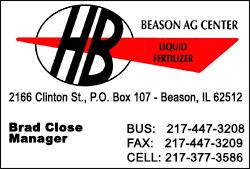|
 The Illinois Department of Public Health has seen
vaccine demand slow in several counties throughout the state, with
early signs of unfilled appointments and increased vaccine
inventory. IDPH is authorizing those communities to begin
vaccinating all residents 16 and older at their immediate
discretion, in order to use the vaccine doses they currently have
available. The Illinois Department of Public Health has seen
vaccine demand slow in several counties throughout the state, with
early signs of unfilled appointments and increased vaccine
inventory. IDPH is authorizing those communities to begin
vaccinating all residents 16 and older at their immediate
discretion, in order to use the vaccine doses they currently have
available.
“Recent increases in hospital admissions and test positivity are
concerning new developments and we don’t want to go down the same
path we’ve seen before and experience a resurgence in the pandemic,
which is why Governor Pritzker directed us to use all our resources
to halt these upticks,” IDPH Director Dr. Ngozi Ezike said. “We
cannot move forward if our metrics are going backward. The vaccine
will help get us to the end of the pandemic, but we need to continue
to reduce spread of the virus by wearing a mask, avoiding large
crowds, keeping six feet of distance, getting tested after seeing
others, and getting vaccinated as soon as possible.”

Expanded Eligibility
The federal government is projecting that Illinois will receive
nearly 1 million doses next week for distribution, an all-time high.
Steady vaccination operations are the best tool to keep Illinois
residents safe. Reductions in demand result in inventory that could
be unused, and all inventory should be used as quickly as possible
to protect residents.
Residents should contact their local health department to learn
whether they have expanded eligibility.
“The number one goal for the state is to get as many people
vaccinated, as quickly and safely as possible in order to stay ahead
of variants,” Dr. Ezike said. “This shift is similar to what we saw
when expanding vaccine eligibility from Phase 1B to Phase 1B+ where
some parts of the state were ready to move forward, while others
were not. Each county is different and local health departments know
better how to vaccinate people in their communities as soon as and
as equitably as possible.”
While all communities will continue to receive their baseline
allocation of doses, new doses above that baseline will be allocated
to high-demand areas where at-risk eligible residents face long
waits for appointments. Rapid Response
Vaccination Teams
To bend the trend in a region seeing increased vulnerability and
protect vulnerable residents, several teams are being deployed for
rapid operations. Mobile rapid response
vaccination teams will deploy over the next two weeks in five
counties in Region 1 (Carroll, Ogle, Boone, Lee, Whiteside) where
IDPH epidemiologists have determined there is a need to administer
doses quickly to blunt increasing trends. These doses are on top of
the allocation to the local health departments. These mobile teams
will be providing single-shot Johnson & Johnson vaccine to county
residents. Appointments will be coordinated by the local health
department.
[to top of second column] |

Residents of Region 1 are also encouraged to visit
the existing mass vaccination site set up in Winnebago County.
Bridge Phase Update
Since March 8, Illinois has seen 10 days of increases in the
seven-day rolling average for hospital admissions. The COVID-19 test
positivity on March 10 was 2.5%. Today’s reported test positivity is
3.3%. While these rates are certainly significantly lower than the
peak, they represent a potential early warning sign about a possible
resurgence.
Chicago has seen its daily case rate increase by nearly 50% since
last week, along with six days of increases in test positivity.
Suburban Cook County has seen its daily case rate increase more than
40%, along with nine days of increasing hospital bed usage. Region
1, the Northern portion of the state including Rockford and
surrounding communities, has seen eight days of increasing hospital
bed usage and six days of increasing test positivity.
To advance into the Bridge Phase that is the final step before the
full reopening, the entire state must achieve several metrics:
• 70% of residents 65 years and older must have received a first
dose;
• Hospitals must maintain 20% or greater ICU bed availability;
• Hospitalizations for COVID-19, admissions for COVID-like illness
and deaths must hold steady or decline over a 28-day monitoring
period.
As outlined in the March 18 update to the Restore Illinois plan,
IDPH will evaluate statewide performance against the metrics by
looking back at the data from the preceding 28 days.
While Illinois is on pace to reach 70% first doses for residents 65
years and older in the coming days, IDPH is monitoring an increase
in new hospital admissions for COVID, which will need to be
appropriately addressed and resolved before moving into the Bridge
Phase. IDPH epidemiologists will continue to focus on the most
recent 10 days to monitor any acute trends that prevent the state
from reaching the Bridge Phase.

Statewide reopening metrics can be found at
http://www.dph.illinois.gov/statewide
metrics.
Information regarding vaccination locations as well as details on
how to book an appointment to receive the vaccine can be found at
the state’s COVID website, coronavirus.illinois.gov. Residents who
don’t have access to or need assistance navigating online services
can call the toll-free IDPH hotline at 833-621-1284 to book an
appointment. The hotline is open 7 days a week from 6am to midnight
with agents available in English and Spanish.
[Illinois Office of Communication and
Information] |